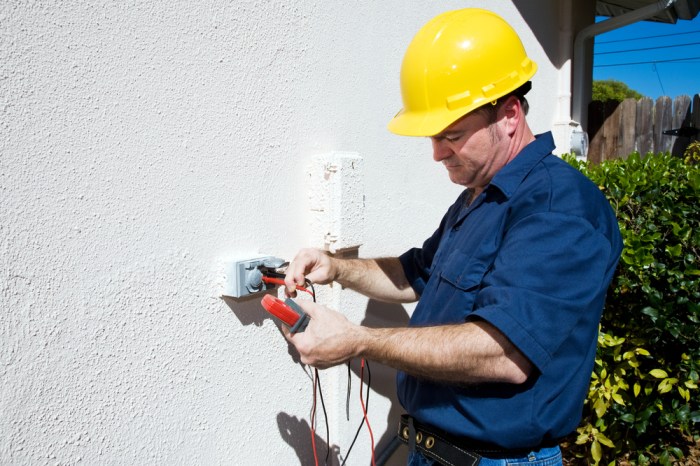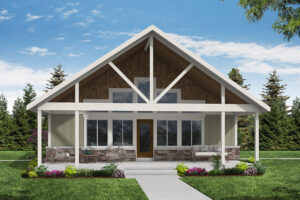
Electrical inspection for older homes is not just a routine check; it’s a vital step to ensure the safety and efficiency of your living space. Many older homes come with unique electrical challenges that can pose serious risks if neglected. This inspection reveals the hidden hazards lurking behind walls, helping homeowners safeguard their families while maximizing the overall value of their properties.
Today, we’ll explore the intricacies of electrical inspections, ranging from understanding outdated electrical codes to recognizing warning signs that an inspection is overdue. With the right information, homeowners can make informed decisions to enhance safety and efficiency in their homes.
Importance of Electrical Inspections for Older Homes
Older homes often come with a rich history and character, but their electrical systems may not be as reliable as their walls and roofs. An electrical inspection is crucial to ensure safety and functionality. Many of these homes were built before modern electrical standards were established, making them susceptible to various hazards and inefficiencies that can pose threats to occupants.The unique challenges faced by electrical systems in older homes include outdated wiring, insufficient electrical service, and an overall lack of grounding and protection mechanisms.
These systems may have been designed to support fewer electrical devices than we typically use today, leading to overloaded circuits and increased fire risks. Additionally, older homes might feature materials that have deteriorated over time or have been modified in ways that compromise safety.
Common Electrical Issues Found During Inspections
Identifying potential hazards in older homes is vital for homeowner safety. During electrical inspections, several common issues are frequently detected, which can lead to severe consequences if left unaddressed. Examples of these issues include:
- Knob-and-tube wiring: This outdated method lacks proper grounding and can pose a fire risk if overloaded.
- Aluminum wiring: Used in many homes during the 1960s and 70s, this type of wiring is prone to overheating and can increase the chance of electrical fires.
- Improperly grounded outlets: A significant safety risk, ungrounded outlets can lead to electric shocks, especially in wet areas like bathrooms and kitchens.
- Overloaded circuits: Many older homes cannot safely handle the power demands of modern appliances, leading to frequent circuit trips and potential fire hazards.
- Outdated fuse boxes: Fuse boxes may not provide adequate protection, increasing the risk of electrical failure and fire due to outdated technology.
The presence of these issues highlights the necessity of an electrical inspection. Identifying and rectifying these problems not only ensures compliance with current safety standards but also enhances the reliability of the home’s electrical system.
Understanding Electrical Codes and Standards
The evolution of electrical codes and standards is a crucial aspect of ensuring safety in older homes. As technology has advanced and our understanding of electrical systems has improved, so too have the regulations governing these systems. This section delves into how electrical codes have transformed over the decades, highlighting key differences between past and current standards, while emphasizing the importance of compliance for both safety and property value.
Evolution of Electrical Codes
Electrical codes have seen significant changes since their first introduction. Originally, regulations were minimal and often based on individual experiences rather than standardized practices. The National Electrical Code (NEC), first promulgated in 1897, marked a pivotal moment in standardizing electrical installations in the United States. Over the years, this code has undergone numerous revisions to incorporate new technologies and address emerging safety concerns.For instance, the adoption of circuit breakers in the 1960s represented a substantial advancement in electrical safety, replacing older fuses which could be prone to overloading.
Each revision of the NEC typically occurs every three years, reflecting current best practices and safety innovations. The latest codes also focus on energy efficiency and environmentally friendly practices, encouraging the installation of energy-saving devices.
Key Differences Between Old and Current Electrical Standards
The discrepancies between older electrical standards and current codes are significant and can affect the safety of a home. Here are some notable differences:
- Wiring Materials: Older homes may utilize aluminum wiring, which is less conductive and more prone to overheating compared to modern copper wiring.
- Grounding Systems: Current codes require grounding of electrical systems for safety, whereas older homes may lack proper grounding, increasing the risk of shock or fire.
- Load Calculations: Modern codes emphasize thorough load calculations to prevent overloads, a practice that was often neglected in older installations.
- Smoke Detectors: New homes are required to have smoke detectors in every bedroom, whereas older codes typically did not mandate their installation.
Compliance with these modern standards not only enhances safety but also protects property value. Homes that meet current electrical codes are more appealing to buyers, as they reflect a commitment to safety and modern living.
Impact of Compliance on Safety and Property Value
Ensuring that a home complies with current electrical codes is paramount for several reasons. Non-compliance can lead to increased risks such as electrical fires, which can be devastating. For instance, a study by the National Fire Protection Association (NFPA) indicated that electrical failures or malfunctions were involved in an estimated 33% of home structure fires.Moreover, homes that do not adhere to current electrical codes can decrease in value.
Prospective buyers often seek assurance that the electrical system is safe and up to date. Properties that require significant electrical upgrades may face reduced offers or prolonged time on the market. Compliance not only mitigates risks but also serves as a valuable investment in the longevity and desirability of the property.
“Investing in compliance with electrical codes enhances safety, reduces liabilities, and protects property value.”
Key Components of Electrical Inspections
Electrical inspections in older homes focus on several critical components to ensure safety and functionality. These inspections are vital in identifying potential hazards and ensuring compliance with current electrical codes. Understanding the key parts of an electrical system can help homeowners make informed decisions about necessary repairs or upgrades.During an electrical inspection, several components are examined closely, including the circuit breakers, wiring, outlets, and grounding systems.
Each of these elements plays a crucial role in the overall safety and performance of the home’s electrical system. Inspectors follow standardized procedures to evaluate these components effectively, identifying any signs of wear, damage, or inefficiency.
Circuit Breakers and Wiring Testing Procedures
Testing circuit breakers and wiring is a fundamental part of an electrical inspection. Inspectors utilize specific procedures to ensure these components are functioning correctly. The following steps Artikel the testing process:
1. Visual Inspection
Inspectors first conduct a visual examination of the circuit breakers and wiring for signs of damage, corrosion, or improper labeling.
2. Testing Circuit Breakers
Using a multimeter, inspectors check the voltage levels in circuit breakers to ensure they are providing the correct power supply. A breaker that trips frequently indicates potential overload or a fault in the circuit.
3. Wiring Insulation Test
The insulation of wiring is tested for integrity. This involves measuring resistance using a megohmmeter to identify any breakdowns in insulation that could lead to short circuits or electrical fires.
4. Load Testing
Load testing is performed to assess how well the wiring can handle the electrical load it is intended for. Any discrepancies may indicate the need for rewiring or upgrading the system.
Importance of Grounding and Bonding
Grounding and bonding are essential safety features in electrical systems, particularly in older homes. These systems help prevent electrical shock and protect equipment from power surges. Understanding their significance is crucial for homeowners.Grounding involves connecting the electrical system to the earth, providing a safe path for excess electricity to dissipate. This is particularly important in older homes where grounding systems may be outdated or insufficient.
Proper grounding helps reduce the risk of electrical shock during a fault condition.Bonding, on the other hand, ensures that all metal parts of the electrical system are interconnected to prevent differences in electrical potential. This minimizes the risk of electric shock and equipment damage. Inadequate bonding can lead to dangerous situations where an electrical fault may energize metal surfaces.The following points highlight why grounding and bonding are critical in older homes:
Safety
Proper grounding and bonding significantly reduce the risk of electrical shock to occupants.
Equipment Protection
These systems protect sensitive electronics from power surges and faults.
Compliance
Ensures the home meets current electrical codes and standards, which may have changed since the home was built.
Insurance
Adequate grounding and bonding can be a requirement for homeowner’s insurance policies, potentially affecting coverage and claims.In conclusion, focusing on circuit breakers, wiring, grounding, and bonding during electrical inspections is vital to ensuring safety and compliance in older homes. Periodic inspections can help maintain electrical systems and protect families from electrical hazards.
Signs that Indicate the Need for an Electrical Inspection
Homeowners should be vigilant about several warning signs that suggest their electrical systems may be in need of a thorough inspection. Recognizing these indicators can prevent potential hazards and ensure the safety of the household. Ignoring these signs can lead to more significant problems in the future, making regular inspections an essential part of maintaining an older home’s electrical system.Frequent power outages, tripped breakers, flickering lights, and warm outlets are all signs that an electrical inspection is necessary.
These issues often point to underlying problems that could pose safety risks. Understanding these signs can help you address electrical issues before they escalate.
Warning Signs of Electrical Issues
It is crucial to be aware of specific symptoms that can indicate electrical problems. The following signs should prompt homeowners to seek an electrical inspection:
- Frequent Power Outages: Regular outages can indicate overloads or faulty wiring. Homes with outdated electrical systems are particularly at risk.
- Tripped Breakers: If your circuit breakers trip often, this signals that the electrical system is being overwhelmed, which can lead to dangerous conditions.
- Flickering Lights: Lights that flicker or dim unexpectedly can point to poor connections or overloaded circuits.
- Warm or Discolored Outlets: Outlets that feel warm to the touch or appear discolored are warning signs of potential overheating and should be inspected immediately.
- Unusual Odors: A burning smell near electrical outlets may indicate wiring issues that pose a fire hazard.
Each of these signs serves as an important indicator of the overall health of your home’s electrical system. Addressing these issues promptly can help prevent more severe complications and ensure that your electrical infrastructure can safely support your household’s needs.
Ignoring warning signs can lead to costly repairs and safety hazards.
Preparing for an Electrical Inspection
Preparing for an electrical inspection in an older home is crucial for ensuring the safety and efficiency of the electrical system. Homeowners should take the time to make necessary preparations that will facilitate a smooth inspection process. Proper preparation not only helps the inspector perform their job effectively but also provides the homeowner with peace of mind.One key aspect of preparing for an electrical inspection is ensuring accessibility to crucial electrical components.
This includes electrical panels, outlets, and any other areas where the inspector will need to examine the wiring or connections. In addition, having documentation of previous electrical work can be highly beneficial. This information provides context and clarity to the inspector, allowing them to better assess the current electrical state of the home.
Checklist of Items for Homeowners
Before the inspection, homeowners should address several items to ensure readiness. This checklist serves as a guide for what to focus on:
- Clear access to electrical panels and outlets: Remove any furniture, decorations, or obstacles that may block access to these areas.
- Check for visible damage: Look for any signs of frayed wires, burnt outlets, or outdated fixtures that may need attention.
- Gather documentation: Compile records of previous electrical work, permits, and inspection reports to present to the inspector.
- Test outlets and switches: Ensure that all outlets and switches are functional and not overloaded.
- Review circuit breaker labels: Make sure that the labels on the circuit breaker panel are clear and accurately reflect what each breaker controls.
Providing clear access to electrical panels and outlets is vital for a thorough inspection. Inspectors need to assess the condition of these components without obstruction. If access is restricted, it can lead to incomplete evaluations and potentially overlook critical issues.Documentation of previous electrical work is equally important. When homeowners provide the inspector with information regarding past repairs or upgrades, it helps create a comprehensive picture of the home’s electrical history.
This context allows the inspector to identify any ongoing issues or confirm that previous work was performed correctly.
Proper preparation can make a significant difference in the effectiveness of an electrical inspection.
Home Furniture and Electrical Safety

The placement of furniture within a home can significantly influence electrical safety. When arranging furniture, it’s essential to consider how it interacts with electrical outlets, cords, and appliances. Proper furniture placement not only enhances the aesthetic appeal of a space but also mitigates potential electrical hazards, ensuring a safer living environment for everyone.Furniture can obstruct air circulation around electrical devices, leading to overheating and potential fire risks.
It is crucial to maintain a safe distance between furniture and electrical outlets, as well as to avoid overloading outlets with too many devices. When setting up your home, keeping these considerations in mind will promote electrical safety and protect both your property and family.
Safe Practices for Utilizing Electrical Outlets with Furniture
Understanding how to use electrical outlets safely while considering furniture placement is vital for preventing accidents. Below are some essential practices to follow when positioning furniture near electrical outlets:
- Maintain a clear space of at least three feet around electrical outlets to allow easy access and reduce the risk of accidental damage to cords.
- Avoid placing heavy furniture on top of extension cords, as this can lead to cord damage and increase the risk of short circuits.
- Ensure that furniture does not block airflow to electrical devices like heaters and air conditioners, preventing overheating.
- Do not use outlets that are difficult to access due to furniture placement; instead, use those that are easily reachable.
- Refrain from using multiple power strips in one outlet to prevent overloading, which can lead to electrical fires.
Importance of Using Surge Protectors for Electronic Devices
Surge protectors play a critical role in safeguarding electronic devices against voltage spikes. These devices absorb excess voltage and prevent it from damaging sensitive electronics. The importance of surge protectors becomes even more pronounced in households with older wiring systems, where electrical surges can be more frequent. Consider the following points regarding the use of surge protectors:
- Investing in quality surge protectors can save high-value electronics, like televisions and computers, from damage due to power surges.
- Surge protectors are especially important during storms, as they can prevent the surge from lightning strikes that may hit the power lines.
- Always choose surge protectors with a built-in circuit breaker for added safety and to prevent overheating.
- Regularly check surge protectors for any signs of wear or damage and replace them as needed to maintain protection efficiency.
Green Living and Electrical Efficiency
Optimizing electrical efficiency in older homes not only promotes sustainability but also enhances the comfort and utility of living spaces. As older homes often feature outdated electrical systems, making improvements can lead to significant energy savings and a reduced carbon footprint. Implementing energy-efficient solutions is key in transforming these residences into eco-friendly havens.Investing in sustainable electrical upgrades provides numerous benefits.
These upgrades can lower energy bills, increase property value, and improve overall safety. By focusing on energy-efficient appliances and solutions, homeowners can contribute positively to the environment while enjoying modern conveniences.
Tips for Optimizing Electrical Efficiency
There are several practical steps homeowners can take to enhance electrical efficiency in older homes. These strategies not only promote green living but also help in managing energy costs effectively:
- Conduct an Energy Audit: A thorough energy audit can identify areas where energy is being wasted. This can be done by a professional or through DIY methods using energy tracking devices.
- Upgrade to LED Lighting: Replacing incandescent bulbs with LED lighting can drastically reduce energy consumption while providing better illumination. LED bulbs use up to 75% less energy and last significantly longer.
- Install Smart Thermostats: Smart thermostats optimize heating and cooling schedules, adapting to the homeowner’s lifestyle and reducing energy consumption during off-peak hours.
- Seal and Insulate: Proper insulation and sealing of gaps can enhance energy efficiency by reducing heating and cooling losses. This includes weather stripping doors and windows.
- Consider Solar Panels: Installing solar panels can generate clean energy, reduce reliance on the grid, and often lead to long-term savings on electricity bills.
Benefits of Sustainable Electrical Upgrades
Investing in sustainable electrical upgrades can yield various advantages that go beyond immediate cost savings. These benefits include:
- Increased Home Value: Upgrading to energy-efficient systems often enhances property value, attracting more potential buyers.
- Lower Carbon Footprint: Sustainable upgrades contribute to reducing greenhouse gas emissions, promoting a healthier environment.
- Enhanced Comfort: Modern electrical systems provide better temperature control and convenience, improving the overall living experience.
- Long-Term Savings: Although the initial investment may be higher, the long-term savings on energy bills can make these upgrades worthwhile.
Examples of Energy-Efficient Appliances and Solutions
Homeowners can choose from a variety of energy-efficient appliances and solutions that align with green living principles. Notable examples include:
- Energy Star Appliances: Appliances with the Energy Star label meet strict energy efficiency guidelines set by the U.S. Environmental Protection Agency. This includes refrigerators, dishwashers, and washing machines.
- Programmable Timers: Installing programmable timers on devices like water heaters and outdoor lighting systems can help optimize their usage, reducing unnecessary energy consumption.
- High-Efficiency HVAC Systems: Upgrading to high-efficiency heating, ventilation, and air conditioning systems can significantly lower energy costs while maintaining comfort.
- Smart Power Strips: Utilizing smart power strips can prevent phantom loads from devices that consume energy when they are off, contributing to overall energy savings.
- Insulated Electric Water Heaters: These water heaters retain heat better, reducing the amount of energy required to maintain water temperature.
Heating and Air Conditioning Considerations

Electrical systems play a vital role in the functionality and efficiency of heating and cooling units in older homes. These systems are often interconnected, meaning that any issue with the electrical supply can directly impact the performance of your HVAC equipment. As older homes may have outdated wiring and electrical panels, understanding the intricacies of how these systems interact is crucial for maintaining a comfortable and safe living environment.The specific electrical requirements for HVAC systems in older homes can vary, but there are some common standards that must be adhered to.
Typically, heating and cooling units require dedicated circuits to operate efficiently and safely. These circuits need to offer the right amperage and voltage, which may differ depending on the unit’s size and capacity. Modern HVAC systems might require a 240-volt circuit, while older units could function adequately on 120 volts. Homeowners must also consider the compatibility of their existing electrical systems with newer HVAC technologies, ensuring that upgrades and replacements can be accommodated without significant rewiring.
Common Electrical Issues with Old Heating and Cooling Systems
Older heating and cooling systems often present a range of electrical issues that can compromise their performance and safety. Familiarity with these problems can aid homeowners in spotting potential hazards early on. Some of the most frequent electrical issues include:
- Worn Out Wiring: Over time, the insulation on wires can degrade, leading to exposed conductors that pose a fire hazard and can cause short circuits.
- Inadequate Circuit Capacity: Older homes might have electrical panels that cannot handle the load required by modern HVAC systems, leading to tripped breakers or blown fuses.
- Improperly Installed Components: DIY modifications or outdated installations can result in poor connections that lead to inefficiencies or system failures.
- Capacitor and Relay Failures: These components are vital for the operation of HVAC units. Failures can prevent the system from starting or cause it to short cycle, which affects efficiency.
- Thermostat Malfunctions: An outdated thermostat can struggle to communicate with modern HVAC systems, leading to temperature inconsistencies and increased energy costs.
Understanding these issues is essential for ensuring the optimal performance of heating and cooling systems in older homes. Regular inspections and maintenance can help mitigate these risks, ensuring that your electrical systems and HVAC equipment work seamlessly together.
Home Inspections and Comprehensive Evaluations
In the realm of home ownership, thorough evaluations are paramount for ensuring safety and longevity. Among the various components that undergo scrutiny during a home inspection, electrical systems hold a critical place. Electrical inspections are integral to a comprehensive home evaluation, ensuring that all systems work harmoniously and safely.Electrical issues can impact various other home systems, creating a ripple effect that jeopardizes the overall integrity and safety of a property.
For instance, outdated wiring may lead to insufficient power for modern appliances, resulting in potential overloads. Additionally, faulty electrical connections can pose fire risks, affecting not only the electrical system but also the plumbing and structural components through heat exposure. Such interconnectedness highlights the necessity of inspecting electrical systems alongside other home components.
Recommended Inspection Professionals for Electrical Assessments
To ensure a thorough and reliable electrical inspection, it’s crucial to seek out qualified professionals. These specialists possess the expertise necessary to identify issues that may not be visible to the untrained eye. Here’s a list of recommended professionals for electrical assessments:
- Licensed Electricians: Professionals who are certified to work on residential electrical systems and are familiar with local codes.
- Home Inspectors: General inspectors who include electrical evaluations as part of their home inspection services.
- Electrical Engineers: Experts who can provide detailed analyses and assessments of complex electrical systems.
- Electrical Safety Compliance Inspectors: Specialists who focus on ensuring that the electrical systems meet safety standards and regulations.
When selecting a professional for an electrical inspection, consider their qualifications, experience, and reputation in the local community. Referrals or reviews from previous clients can also guide you in making an informed choice.
“The quality of your electrical system can have lasting effects on every aspect of your home.”
Understanding the role of electrical inspections within the broader framework of home evaluations ensures that potential issues are detected early, promoting a safer living environment.
Developing House Plans with Electrical Safety in Mind
Incorporating electrical safety into house plans is crucial for ensuring long-term safety and functionality. As homes age, their electrical systems must meet modern standards to prevent hazards such as fires and electrical shocks. Planning with safety in mind not only protects the inhabitants but also enhances the property’s value and livability. Designing a house with an efficient electrical layout involves several key considerations.
These include the strategic placement of outlets, ensuring proper grounding, and planning for future expansion or upgrades. An effective design minimizes the risk of overload and allows for easy access to electrical components, which is important for maintenance and safety checks.
Considerations for Electrical System Integration
When integrating electrical systems into new house plans, several factors must be assessed to ensure optimal safety and efficiency. Key points include:
- Load Calculation: Conducting accurate load calculations is essential to determine the appropriate size of the electrical service panel. This prevents circuit overloads and potential hazards.
- Outlet Placement: Outlets should be conveniently located in all rooms, spaced according to the National Electrical Code (NEC) requirements to reduce the use of extension cords.
- Grounding and Bonding: Proper grounding and bonding systems prevent electrical shock and damage. Ensure the house plans include provisions for grounding rods and bonding connections.
- Wire Sizing: Using the correct wire gauge for different circuits is imperative to handle the expected load without overheating.
- Lighting Design: Incorporate energy-efficient lighting solutions that not only enhance aesthetics but also reduce electrical consumption.
Designing Safe and Efficient Layouts
Creating layouts that facilitate safe and efficient electrical installations requires thoughtful organization and adherence to industry standards. Important best practices include:
- Zoning Circuits: Grouping electrical circuits by usage can reduce the risk of overload and make it easier to identify issues. For instance, separate circuits for high-wattage appliances and lighting.
- Accessibility: Ensure that electrical panels and key components are easily accessible for maintenance and emergency situations.
- Future Expansion: Design plans to accommodate future electrical needs, such as additional outlets or circuits. This foresight can reduce costly renovations later on.
- Energy Efficiency: Including smart home technologies and energy-efficient appliances can enhance safety while promoting green living.
Best Practices for Future-Proofing Electrical Systems
Future-proofing involves proactive measures during renovations or new constructions to ensure that electrical systems can adapt to evolving technological needs. Important strategies include:
- Incorporating Conduits: Installing conduit systems allows for easy upgrades or replacements of wiring without needing extensive renovations.
- Smart Home Readiness: Designing for smart home integration by including wiring for smart devices can enhance convenience and security.
- Surge Protection: Installing whole-house surge protectors can safeguard electrical systems against voltage spikes.
- Dedicated Circuits: Planning for dedicated circuits for high-demand appliances ensures reliability and safety during peak usage times.
“Designing with electrical safety in mind not only protects your investment but also supports a safe living environment for generations to come.”
Closure
In conclusion, prioritizing electrical inspections for older homes is essential for maintaining safety and compliance with modern standards. By staying vigilant and proactive, homeowners not only protect their investments but also ensure a secure living environment. Remember, a thorough electrical inspection is an opportunity to address potential issues before they escalate, paving the way for a safer and more efficient home.
Key Questions Answered
How often should I get my older home’s electrical system inspected?
It’s recommended to have the electrical system inspected every 5 to 10 years, or sooner if you notice any issues.
What are some common signs that my electrical system needs inspection?
Signs include frequent tripped breakers, flickering lights, or warm outlets which indicate underlying problems.
Will an electrical inspection be expensive?
The cost can vary based on the size of your home and the extent of the inspection, but it is generally a worthwhile investment for safety.
Can I perform my own electrical inspection?
While you can check for visible issues like frayed wires, it’s best to hire a licensed professional for a comprehensive inspection.
What improvements can I make after an inspection?
Common improvements include upgrading old wiring, installing GFCI outlets, or adding more circuits to handle modern electrical demands.





